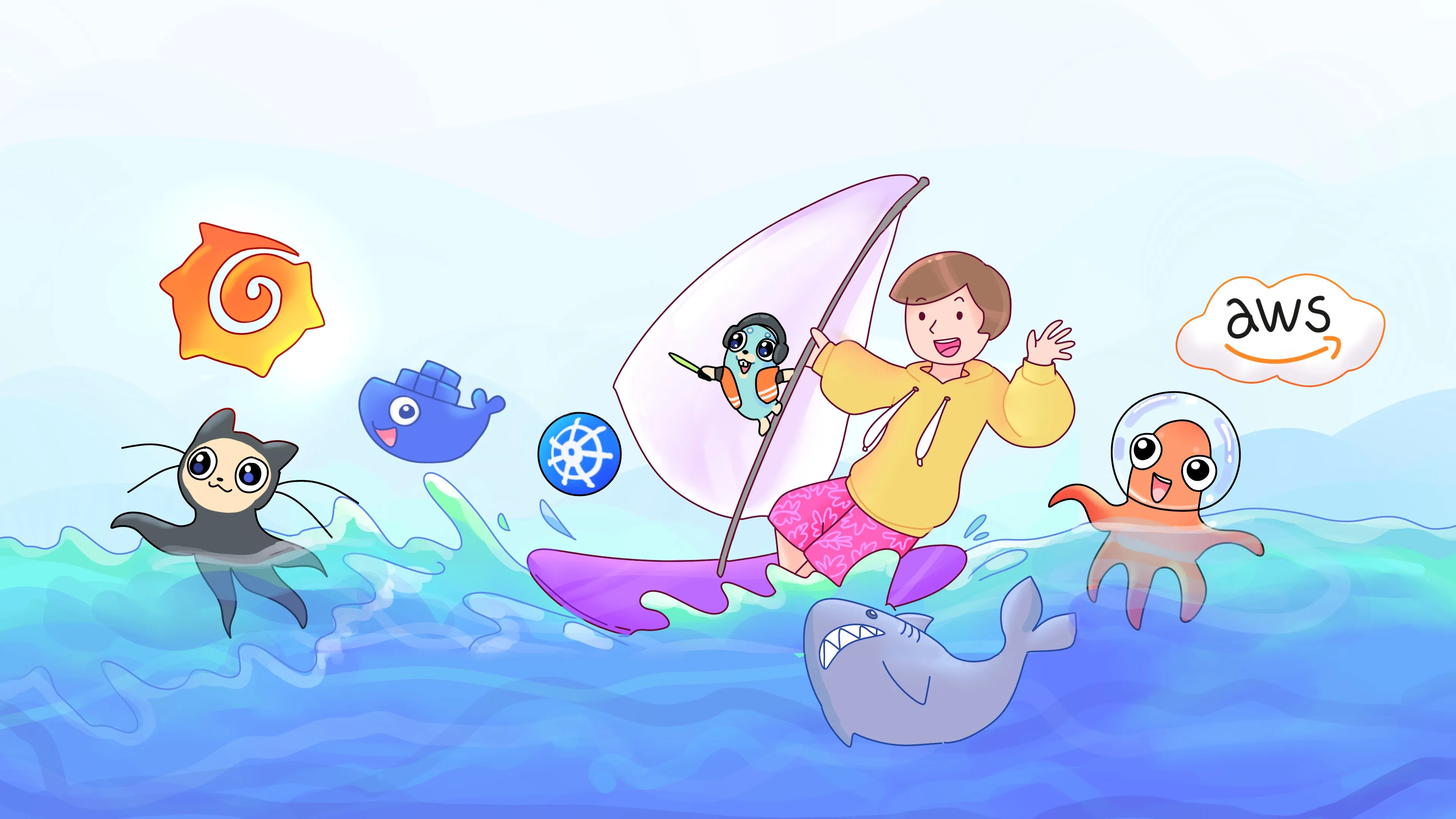Docker Init The Future of Easy Project Initialization

Docker has transformed the landscape of software development, offering a lightweight, portable, and consistent runtime environment that operates seamlessly across various infrastructures. One of Docker’s latest contributions to this evolving landscape is the Docker Init feature, a command-line interface (CLI) command that streamlines the addition of Docker to any project.
Understanding Docker Init
The Docker Init feature should not be confused with the internally used docker-init executable, which is triggered by Docker when utilizing the --init flag with the docker run command. The Docker Init we’re discussing here is a new feature in its beta phase that automates the creation of essential Docker-related assets like Dockerfiles, .dockerignore files, and compose.yaml files.
The Docker Init feature presently supports Go, Node, and Python, with Docker’s development team actively extending support to other languages and frameworks, including Java, Rust, and .NET. This progressive expansion promises to make Docker Init even more useful to a wide range of developers.
Working with Docker Init
To use Docker Init, you’ll need Docker Desktop version 4.18 or later. Once this is set up, you can run the docker init command in your project’s target directory. Docker Init will detect the project’s characteristics and automatically generate the necessary Docker files. This feature is particularly valuable for developers who are new to Docker, those learning about containerization, or developers looking to integrate Docker into their existing projects.
Docker Init in Action
Let’s take a web server written in Go as an example.
We execute the command to start the process of automatically generating the necessary files to run the application using Docker Compose:
docker init
Next, you need to select the programming language in which your application is written.
NOTEIn this example, we are considering an application written in Go.
Select Go and press the “Enter” button.

Now you need to specify the installed version of Go.
NOTEIn this example, we consider working with version 1.20.
You can check the installed version with the command:
go versionSpecify the installed version of Go and press the “Enter” button.

Next, you need to select the project directory in which “main.go” is located.
NOTEIn this example, “main.go” is in the root directory of the project.
Select the project directory in which “main.go” is located and press the “Enter” button.

Now you need to specify the port on which the web server is running.
NOTEIn this example, the web server is using port 8081.
Select the port on which the web server is running and press the “Enter” button.

The necessary files to run the application using Docker Compose have been generated.
We start the web server using Docker Compose:
docker compose up --build
The web server has started and is using port 8081.
Now you can go to http://127.0.0.1:8081 and check if the web server is working.

The web server is running.

Benefits of Docker Init
Docker Init plays a significant role in automating the creation of necessary Docker assets and standardizing the process across different projects. It allows developers to focus more on the development of their applications, reducing the risk of errors and inconsistencies, and thereby accelerating the adoption of Docker and containerization.
After Docker Init has completed, there may be a need to modify the created files to align them with your project requirements. In such cases, you can refer back to the Docker documentation for further information.
Conclusion
In its beta phase, Docker Init is already showing immense promise as a tool that simplifies the process of incorporating Docker support into developers’ projects. By automating the creation of Docker assets, Docker Init is another step in Docker’s commitment to simplify and enhance the world of software development. As Docker continues to refine and expand this feature, Docker Init is set to become a vital part of Docker’s impressive toolkit.
Patreon Exclusives
🏆 Join my Patreon and dive deep into the world of Docker and DevOps with exclusive content tailored for IT enthusiasts and professionals. As your experienced guide, I offer a range of membership tiers designed to suit everyone from newbies to IT experts.
Tools I Personally Trust
If you’re building, breaking, and trying to keep your digital life sane (like every good DevOps engineer), these are tools I actually use every day:
🛸 Proton VPN (60% off link) - my shield on the internet. Keeps my Wi-Fi secure, hides my IP, and blocks trackers. Even on sketchy café Wi-Fi, I’m safe.
🔑 Proton Pass (50% off link) - my password vault. End-to-end encrypted logins, 2FA, and notes - all mine and only mine.
🦑 GitKraken Pro (50% off link) - my visual Git sidekick. Beautiful commit graph, easy merges, and fewer “WTF just happened?” moments.
💜 These links give you discounts - and help support the channel at no extra cost.
Gear & Books I Trust
📕 Essential DevOps books
🖥️ Studio streaming & recording kit
📡 Streaming starter kit
Social Channels
🎬 YouTube
🐦 X (Twitter)
🎨 Instagram
🐘 Mastodon
🧵 Threads
🎸 Facebook
🦋 Bluesky
🎥 TikTok
💻 LinkedIn
📣 daily.dev Squad
✈️ Telegram
🐈 GitHub
Community of IT Experts
👾 Discord
Refill My Coffee Supplies
💖 PayPal
🏆 Patreon
🥤 BuyMeaCoffee
🍪 Ko-fi
💎 GitHub
⚡ Telegram Boost
🌟 Bitcoin (BTC): bc1q2fq0k2lvdythdrj4ep20metjwnjuf7wccpckxc
🔹 Ethereum (ETH): 0x76C936F9366Fad39769CA5285b0Af1d975adacB8
🪙 Binance Coin (BNB): bnb1xnn6gg63lr2dgufngfr0lkq39kz8qltjt2v2g6
💠 Litecoin (LTC): LMGrhx8Jsx73h1pWY9FE8GB46nBytjvz8g
Is this content AI-generated?
No. Every article on this blog is written by me personally, drawing on decades of hands-on IT experience and a genuine passion for technology.
I use AI tools exclusively to help polish grammar and ensure my technical guidance is as clear as possible. However, the core ideas, strategic insights, and step-by-step solutions are entirely my own, born from real-world work.
Because of this human-and-AI partnership, some detection tools might flag this content. You can be confident, though, that the expertise is authentic. My goal is to share road-tested knowledge you can trust.

